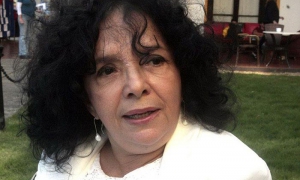
The work of Juan Almeida can be considered singular, taking into account the contexts in which it was conceived. It is not possible to separate from his musical production his revolutionary work, because both lines form an inseparable bond.
He had no musical studies. His humble origins prevented him from giving channel to his talent in some specialized academy; however, it was not an obstacle for the young Juan to pursue his dream, even when he was fully inserted in the insurrectional struggle.
In spite of the success of La Lupe, to whom many attribute the fact of being his first song, Almeida had already composed several songs before, so he did not make his debut in Mexico as a composer, when he wrote the anthological song before leaving on the Granma yacht in 1956. It is very interesting, from the morphological point of view, how this work resorts to elements of the ranchera and the Cuban bolero, and foresees the hybridization that, since the end of the 50's, had already been brewing in Aztec lands with figures that in the long run were the greats of Mexican bolero: Agustín Lara, Vicente Garrido, Consuelo Velázquez (Concha), Manzanero or Abel Domínguez.
Some of them before, and others shortly after, would use similar stylistic resources to adapt the bolero to the Mexican reality, not without first adjusting it to their own customs, just as Almeida did when he composed La Lupe.
The nuance of faith and the epic element inserted in the work, as a farewell to an unknown future -which could well be compared to literary passages, such as the cantares de gesta or the great Shakespearian-style tragedies- are key in La Lupe.
After the popularity of the song, Almeida continued to compose and her creative style encompassed sones, guarachas, boleros and works with very mixed elements, sometimes difficult to categorize or rigidly frame. A significant feature of his authorial production was the singularity of having great female voices premiere and popularize several of his songs, which was marked by different creative stages. Artists such as Elena Burke, Omara Portuondo, Farah María, Amelita Frades and Beatriz Márquez were among them.
Different versions of his work have been taken to instrumental and choral formats, as well as to charanga orchestras, ensembles, septets and more. Memorable ones are Dame un traguito, in charge of the Sierra Maestra Group, or Juventud y experiencia, with Farah, which continue to resound in our musical lintels.
The renowned musicologist María Teresa Linares pointed out, among the values of his musical work, "his contributions to Cuban songwriting; but if we wanted to make a judgment about his permanence in what will be the history of Cuban music, his presence in time, Dame un traguito and La Lupe contain the elements of Cubanness and popularity enough for the 2000 generations to remember that guerrilla, one of the best captains who made such good music inserted in their culture."
For his part, musician and professor Harold Gramatges said he felt "at ease with his ballads, which are definitely boleros adapted to the line of our times; it is not for nothing that several of the best Cuban boleristas have incorporated them to their repertoire and have defended them as they deserve. But, as I am a fervent lover of son, I feel even more at ease when I hear these compositions by Almeida enjoyed by the people, who, as good Cubans, are attracted by the dance."






